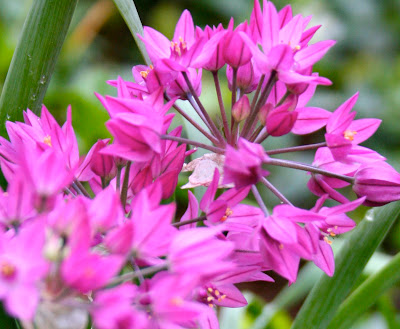Just a week before Christmas, and I am getting in condition for the holidays. That means amping up my exercise regimen in anticipation of the celebratory effects of chocolate-covered almonds, cardomom bread, and peppermint stick ice cream with hot fudge sauce. And around the house, there are presents to be wrapped, batches of nutty, fruity granola to cook for friends, family, and colleagues, and halls to be decked--in a restrained manner--with holiday greenery.
 |
| "Blue Princess" holly (Ilex meserveae) |
With an allergy to all things glittery, bright red, and swathed in ribbon, I'm a mimimalist in the holiday decoration department. So fresh-cut greens please my palette perfectly. Fortunately, our little yard hosts a variety of yews, hollies, and ivies, so I can pretty much sate my appetite just by picking up a pair of clippers and heading out the back door.
 |
| Common yew (Taxus baccata) |
Properly conditioned cut greens will last about two weeks indoors, and longer if they are kept out of bright sunlight and at a cool temperature. Since our thermostat is set to 60 degrees during the short grey days of a New England winter, I'm anticipating that this weekend's gathering will easily see us into the New Year.
Conditioning is an oh-so-simple process: just re-cut the branches at a 45 degree angle, crush the cut ends in order to encourage the branches to take up water, and stick the mass of greens in a pitcher of room temperature water. In a day, they'll be ready to cut down to working size.
 |
| Cutting at 45 degree angle |
This holiday greenery looks festive in almost every container. I think that the dark green foliage plays particularly well with pewter- and silver-colored metal. Flanking our dining room nativity, a couple of family christening cups hold a mixture of hollies and yews.
Perched on a living room side table, a blend of "Chesapeake" Japanese holly (Ilex crenata),"Blue Princess" holly, common yew, and little-leaf ivy fills another antique cup.
Sprigs of American holly (Ilex opaca) are nestled among the Christmas tree balls in our holiday centerpiece. I'm clearly not going for the big bells and whistles presentation.
Joyful, joyful!
















































